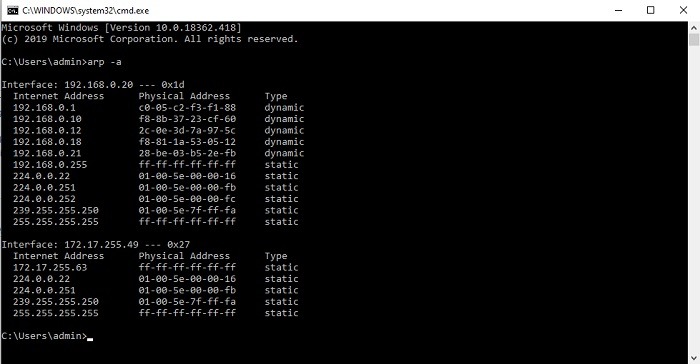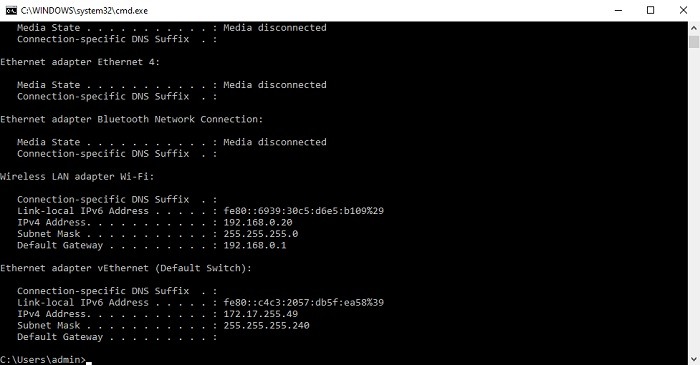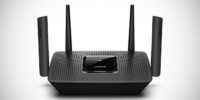
If you are a smart home enthusiast, or if you live with one, you might add a lot of devices to your network and not remember which of them have access to the Internet. There is an easy way to check this information.
The vast majority of Internet-connected devices connect to the Internet through your Wi-Fi router. Some devices use Bluetooth to communicate with a controller, which is usually your smart phone. Bluetooth doesn’t give Internet access, so you won’t need to worry too much about those.
The easiest way to look for other devices connected to your router is to log into the router. The management menu of each router brand and type is different, but you should look for a menu option that gives “Attached Devices.”
If you don’t have your router’s password, you can still see all of the devices on your network from your own computer. The instructions below show how to do this on a computer running Windows 10. You should have your computer connected to the wireless router before following these instructions.
Query the Network on a Windows Computer
1. Press the Win button on your keyboard, hold it down and press r at the same time. This will open a small window. Type cmd into the text box and press the OK button. This will open a Command Prompt window.
2. Enter arp -a at the command prompt and press Enter. The output should look like the image below.

This output will show you all of the devices connected to the network other than the computer that you issued the command on.
3. Check on the status of your computer and find the address of the network router by entering ipconfig at the command prompt. Press Enter. Your results should look like those shown below.

Don’t worry about all of the adapter records that state “Media disconnected.” The important record is the one that is headed “Wireless LAN adapter Wi-Fi.” The “IPv4 Address” in the output is the address allocated to the computer that you are on. The “Default Gateway” entry shows the address of your router.
Act on Information
If you have the username and password for the administrator’s account on your router, you should open a browser and type the IP address that you saw in the ipconfig results as Default Gateway into the address bar, then you can log in and look for the “Attached Devices” information.
The arp output from Step Two above gives you the same information that you will get from the router management console. The one advantage of checking in the router menu for this information is that it will give you a name for the devices listed.
Without getting into the router, it is very difficult to get the names of devices other than the one that you are on, so you will just have to guess which device is allocated to the addresses that you see in the arp output. However, even the Attached Devices list in the router will not tell you exactly where each of the devices are located in the house, so you will still need to do some hunting.
Read ARP Output
There are a number of devices listed in the arp output that you can discount immediately. The output shown above gives the first IP address as 192.168.0.1. We know from the ipconfig output that this is the address of the router. We also know that the computer upon which I executed the arp command is not in the list.
Entries that have a physical address of ff-ff-ff-ff-ff-ff are broadcast addresses and don’t point to real devices. IP addresses from 224.0.0.0 to 239.255.255.255 are multicast addresses and are also not physical devices. So, in the output shown above, only 192.168.0.10, 192.168.0.12, 192.168.0.18, and 192.168.0.21 are real devices connected to the Wi-Fi router.
If you have a smartphone and connect it to your home Wi-Fi router, turn it off and run the arp command again. One of the listed devices will not appear in the list this time. In the case of the output shown of my first arp run, 192.168.0.21 turned out to be my phone.
Track Down Devices
Once you have ruled out your computer, the router, and all phones in the house, you will be left with a number of devices still connected to your home wireless network.
These devices cannot connect to the router without the key, which someone must have set it up with. Knowing how many devices are connected should give you a clue to what they are: a smart thermostat, a doorbell, a set-top box, for example.
Go around the house and turn off each smart device that you recognize. Keep returning to your computer to see if any devices remain connected. If you are sure that you have turned off everything, check with housemates if they have any devices connected to the router. If you have eliminated all phones, computers, and smart devices and there are still unknown entries in the arp results, then a neighbor is stealing your Wi-Fi.









